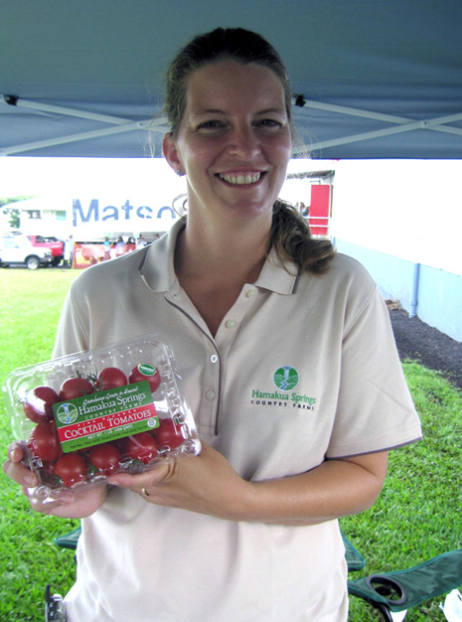Richard Ha writes:
Our farm is neighbors with Andrade Camp, a small neighborhood whose residents are working to transition from its private water system, developed in the sugar plantation era, to a modern municipal system.
It’s a complicated effort that brings together the residents’ Representative to the legislature, the County Board of Water Supply, the U.S. Department of Agriculture, the County Research and Development Department, the County Planning Dept and Senator Inouye’s office.

I’ve been very impressed with how these government agencies, and especially Representative Dwight Takamine, Board of Water Supply manager Milton Pavao and USDA’s Ted Matsuo, work in the best interest of the people. It gives a person renewed faith in government.
Andrade Camp consists of approximately 20 sugar plantation-style homes located 11 miles north of Hilo, mauka of Highway 19. The houses, built by the Hilo Coast Processing Company, are owned by former company employees. Today most of the residents are in their late 70s or even in their 80s. They are accustomed to the sugar plantation taking care of their needs.
We at the farm got involved because our neighbors, the residents of Andrade Camp, are members of the previous generation who helped make Hawaii what it is today. They are uncomplaining and trust that someone is going to do the right thing. It is the least we can do.
A few years back, when C. Brewer sold all of their former sugar lands, they informed Andrade Camp residents they would need to take over the private water system and start paying the county for their water use. We helped the residents form an association which could bill each household for its water usage. The association is given a bill based on the reading from the county’s master meter. Residents are then billed by the association based on their individual meter reading.

The water system was originally served by a pipeline that went down to the Pepe’ekeo sugar mill, and residents were charged a flat rate for their water use. They paid $8 per month, and the sugar company took care of all maintenance. Just prior to leaving, the sugar company replaced all the old lines with a plastic 2-inch pipe that passed by each house, and new water meters were installed at each house, which made it possible to determine how much water each house uses.
Several years ago, Dwight Takamine held a series of information gathering meetings with all the interested parties, and the process to upgrade the water system began. A budget was developed, and then the plan to upgrade the system was brought before the Board of Water Supply for approval and funding. The project was approved for funding and the formal process began. A contractor was hired to develop the plan and submit the application to the Department of Agriculture for grant approval. It is going through the process right now.
It is heartwarming to see how all the parties involved are doing everything they can to help the residents of Andrade Camp. I wish everyone could see their government in action as I am seeing it. It would make them feel good.





 Dayday Hopkins, Economic Development Specialist at the Hawai‘i County Department of Research and Development, says she asked Richard how many tomatoes he was talking about. “I thought it was a case or two,” she said, “but he asked how many departments we have.”
Dayday Hopkins, Economic Development Specialist at the Hawai‘i County Department of Research and Development, says she asked Richard how many tomatoes he was talking about. “I thought it was a case or two,” she said, “but he asked how many departments we have.”







